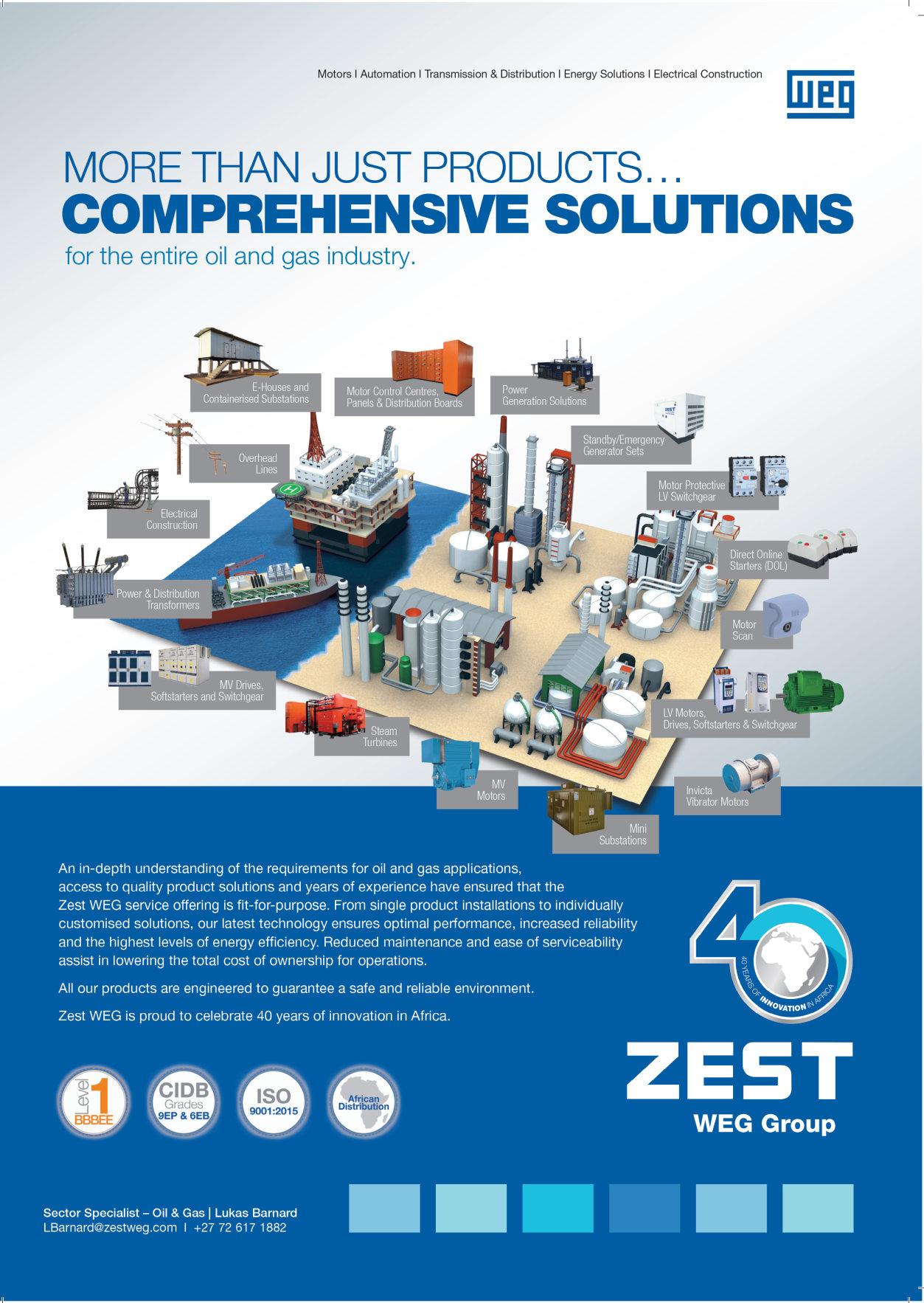
19 minute read
The dangers of inefficient tailings management
Mine operators are continually looking for solutions to transport, store and dispose of tailings safely and efficiently. Inefficient tailings management, however, can lead to disaster. Tim Guest reports.
Mine operators face major challenges when it comes to tailings management. Specialist companies offer tailings expertise from pipeline transport systems as part of sustainable mine waste solutions to water extraction methods, and technology, aimed at making use of tailings in the manufacture of products and materials for sectors, such as construction. However, if adequate processes are not put in place, inefficient management can lead to disaster. The catastrophic failure of a tailings storage facility at Vale’s Corrego do Feijão mine in Brumadinho, Brazil, on 25 January 2019 killed 270 people and led directly to the August 2020 launch of the Global Industry Standard on Tailings Management (the Standard). Brazil aside, Africa itself is not without a grim history of tailings failures; a tailings dam collapsed at South Africa in 1994 killing 17 people in Free State and, previously, in 1974, a tailings dam failed in Bafokeng in the northwest of the country.
Turning our attention to the Standard, how the sector in South Africa has responded and a few of the specialist players likely to ensure best practice in the future.
Following the 2019 Brazilian tailings disaster, Tom Butler, International Council on Mining and Metals (ICMM) CEO, said it was a pivotal moment demanding decisive and appropriate action from the sector in a united, collaborative and transparent way. Accordingly, the ICMM partnered with the UN Environment Programme (UNEP) and Principles for Responsible Investment (PRI) under the guidance of chairperson, Dr Bruno Oberle, together with an expert panel and advisory group, and published the Standard. According to Butler, it sets a new, global benchmark to achieve strong social, environmental and technical outcomes in tailings management, although with a strong emphasis on accountability and disclosure. Butler said an immediate priority is for all 28 ICMM members, (who represent around a third of the global industry and include African players, such as African Rainbow Minerals, AngloAmerican, Glencore, GoldFields and Sibanye Stillwater, to ensure the Standard’s full implementation. He said the Standard will be integrated into the ICMM’s existing membership commitments; all member facilities with ‘extreme’ or ‘very high’ potential consequences will be conformed to the Standard by August 2023, and all other sites by 2025. Butler’s caveat stressed the Standard is ‘not a silver bullet’ and the focus must now be on broad uptake and effective implementation to ensure safer management of tailings storage facilities everywhere. To help drive that forward, in May this year the ICMM launched two new resources: ‘Conformance Protocols’ for the Standard and a tailings management ‘Good Practice Guide’. The 2019 criteria in the Conformance Protocols address the Standard’s 77 requirements, enabling conformance to be assessed. The Good Practice Guide promotes good governance and engineering, including improved engineering practices across the whole tailings lifecycle, from project
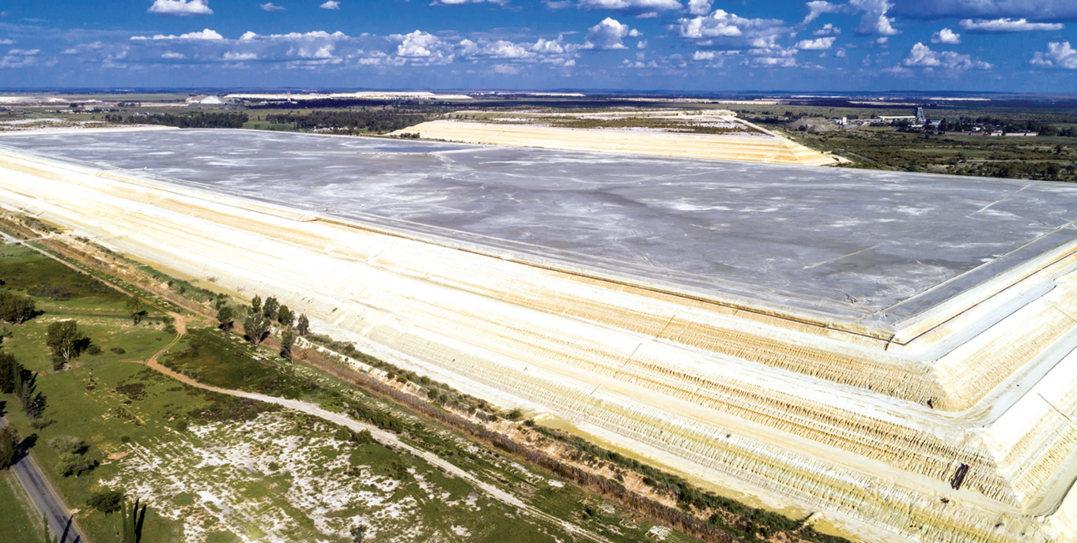
An example of Harmony Gold Mining’s tailings management operation.
conception and design to construction and operation, closure and post-closure.
The challenge cannot be underestimated. A Reuters’ report: The Looming Risks of Tailings Dams, published last year, stated that over 33% of tailings dams globally are ‘at high risk of causing catastrophic damage to nearby communities’ if compromised and that ‘South Africa has the largest number of tailings dams built using an architectural method considered unsafe by many engineers’.
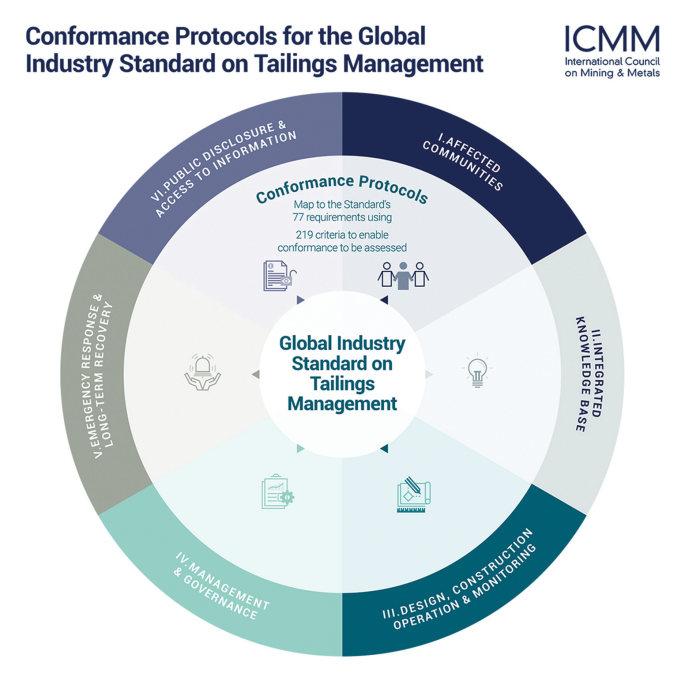
The good news is…
In response to the Standard, ICMM and the Minerals Council South Africa (MCSA) issued a statement calling on members to work towards ensuring they operate in line with it. The MCSA underscored the Standard integrated social, environmental, local economic and technical considerations in tailings management and ‘unambiguously places accountability for tailings management at the most senior levels of company structures’. This bodes well for setting the South Africa situation straight; the sector, too, has specialist tailings management companies to call on, such as Ecolab and its Nalco Water subsidiary active in South Africa, as well as players like SGS, offering its expertise to GoldFields, in reprocessing hundreds of millions of tons of tailings from historic gold tailings dams in the Witwatersrand area. Here SGS recovers uranium and residual gold and helps eliminate longterm environmental liabilities, with tailings re-deposited far from urbanisation, allowing rehabilitation of the real estate. Weir Minerals offers end-to-end tailings and pipeline management and employs the latest techniques from basic pumping to dewatering and transport, disposal, along with conversion of tailings into re-usable resources –addressing water conservation, operational sustainability and safe tailings deposition. Harmony Gold Mining stresses its compliance with environmental legislation, and the careful way it manages the tailings from its mining operations; it currently has 85 tailings storage facilities under management in both South Africa and Papua New Guinea comprising 24 operational facilities, 10 re-mining facilities and 51 dormant and in-active facilities. Nineteen of its operational facilities are constructed using upstream deposition, with five using upstream cyclone deposition.
With such expertise involved, implementation of the Standard’s advice across South Africa and the continent could well see the dangers of poor tailings management eliminated in the short- and medium-term. ■
ICMM Image Credit:
METSO OUTOTEC TRUCK BODY HELPS MINES AND QUARRIES HAUL MORE
Metso Outotec’s truck body, available for operations in America for the first time, has been designed to maximise the availability and performance of haul trucks while reducing the costs for service and maintenance.
The groundbreaking innovation that combines the benefits of rubber and a high-strength steel structure has been well-received by customers. It is the first order globally for a truck with loading capacity of 360 tons.
Recently, one of the world’s largest copper mines decided to invest in a Metso Outotec truck body, with the customer looking to increase payload of its trucks while also reducing maintenance.
“We will supply a truck body with lower weight and major volume capacity compared to the OEM body. We can prove with objective calculation the benefits the customer is going to receive, such as fuel savings, less maintenance, more uptime, the possibility to increase payload on each hauling, as well as improving the truck body’s life. All these benefits are answering to growing demand for environmental efficiency,” said Alfredo Rios, business support manager, loading and hauling, Americas, Metso Outotec.
Metso Outotec truck body key benefits: • Up to 30% lighter than a conventional steel-lined truck body. • Lower fuel consumption per hauled tonne, less CO2 emissions. • The rubber lining lasts up to 300% longer than conventional steel lining, drastically reducing the need for maintenance. • Modular design makes the lining easier to install and maintain. • Noise cut in half; vibrations reduced by up to 97%. • Available for all common truck models.
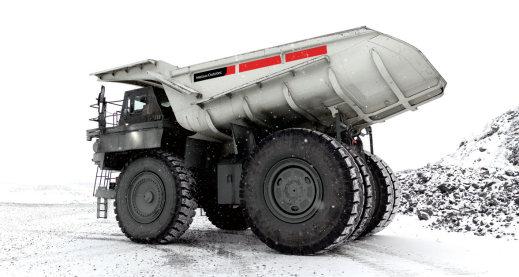
Metso Outotec’s truck body was launched in 2019.
VOLVO CE OFFERS Liebherr expands mining truck range with T 274
ENHANCED FUEL EFFICIENCY The Liebherr T 274 is a 305 tonne haul truck which bridges the gap between the T 284 (363 tonne) Volvo Construction Equipment (Volvo CE) has and the T 264 (240 tonne). Following the same base design as the T 284, the T 274 provides faster introduced three new hybrid excavators that offer cycle times, higher production rates, lower fuel consumption, and a lower cost per tonne. a further fuel efficiency improvement of up to The T 274 is powered by the most powerful engine in its class at 3,650 hp and the Liebherr 17% compared to conventional machines. The Litronic Plus AC Drive system, which improves the cycle time efficiency by providing continuous new range comes in the form of an enhanced 30- uphill speed, differing from traditional mechanical drive trucks that require shifting of gears. ton class EC300E Hybrid excavator, and the The truck is equipped with 4,500kW/6,035hp dynamic braking power to operate efficiently on introduction of the technology in two new downhill hauls. All Liebherr trucks offer at least two safety exit routes from the cab to the ground machines – the 25-ton class EC250E Hybrid and and have ladders and platforms that allow easy engine access. The T 274 features a double A-arm 35-ton class EC350E Hybrid. suspension, which keeps optimal ground contact of the tyre within the whole suspension stroke,
The machines use Volvo’s novel hydraulic- reducing the tread and wear with optimised camber and toe angle. hybrid technology that harvests energy The fast swing times of the R 9800 will load the T 274 with four bucket passes ensuring quick generated by the down motion of the excavator's loading times that lead to high production rates of both the truck and excavator – making it an boom. The powerful and regular boom-down excellent pairing. The T 274 is also compatible with the brand new R 9600. motions charge a hydraulic accumulator, which The Liebherr Trolley Assist System, available as an option on the T 274, utilises an overhead then stores and delivers energy, when needed, to pantograph to connect the electric-drive system to the electrical network in order to either increase drive the hydraulic assist motor that helps power truck fleet productivity, or reduce the fleet size while maintaining yearly production. This can result the engine system. The hybrid models offer the in a significant reduction of diesel fuel consumption and CO2emissions. Liebherr also offers an same levels of controllability and performance as array of specific solutions for customers working in extreme environments to guarantee that the the standard machines, including being able to T 274 will be fit for any working conditions. work in eco mode and hybrid mode simultaneously.
The extra energy boost, which the hybrid system is able to offer, helps take the load off the The Liebherr T 274 follows the same base design as the T 284. engine, and delivers improved fuel efficiency of up to 17% with up to 15% less CO2 emissions –particularly important when working in urban areas. When used in 'dig and dump' applications this approach offers rapid payback.
While the EC250E Hybrid and EC350E Hybrid are all new, the EC300E Hybrid has been comprehensively upgraded. It features a range of new features including a 700kg heavier counterweight, new priority functions, adjustable boom-down speed control, improved response times, and improved fuel efficiency thanks to intelligent electro-hydraulic technology and a new D8M Volvo engine. Image Credit: Liebherr
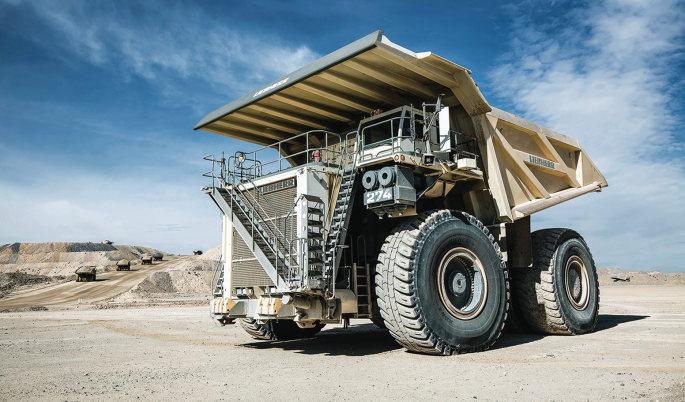

Unbottling minerals processing plants
ELB Equipment explains why it is the leading supplier of screen media and its successes so far.
It is not uncommon to find multimillion Rand processing plants with enormous production potential being severely restricted by poorly specified or old-fashioned screening media.
Provided that the plant is fully operational and is appropriate for the job, the screen is the usual culprit that slows production or leads to unacceptably high levels of downtime. Fortunately, with the right expertise and best products for the job, help is at hand for these ailing operations. Minerals processing equipment supplier, ELB Equipment, in partnership with internationally acclaimed screen media manufacturer, Major Wire, has spent several years fixing screening problems at an almost endless array of processing plants.
Waynne Martin, technical sales representative of ELB Equipment, says the company’s partnership with the world’s leading supplier of screen media, enables the company’s technical teams to identify the source of a screening problem and provide solutions to bring the equipment back up to the required spec and further improve on its performance through the use of a wide range of Major Wire screen solutions for practically any application.
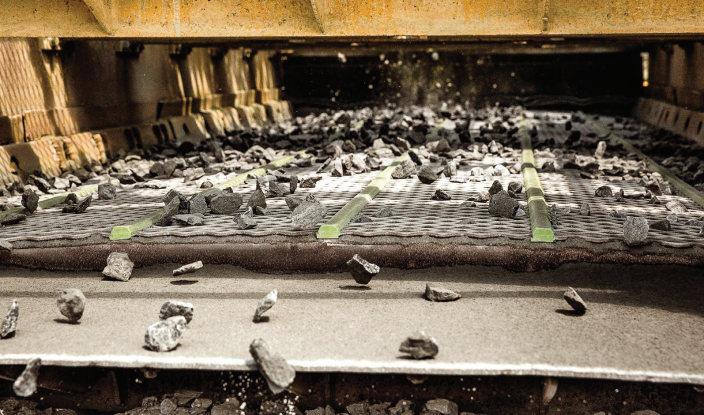
Success stories
Examples of the type of improvements obtained with Major Wire screens in the mine and quarrying industry are many, including a recent instance where imported anthracite was difficult to process due to its “sticky, wet” consistency and was grinding production to a snail’s pace. The introduction of a carefully selected Major Wire tensioned screen immediately boosted production by 50% with a host of other benefits to boot.
More recently a simple upgrade of its traditional panel-type mesh screens, to Major Wire’s Flex-Mat screens, allowed a major diamond producer to reduce carry over by more than 15%. Similarly, one of the country’s largest cement producers was able to improve the production feed rate of highly abrasive dolomite to 360 tons per hour (TPH) from its previous 180 TPH. Simultaneously, carry over was reduced from 35% to zero and the panel’s wear-life was improved from having a seven-week lifespan with traditional woven mesh, to more than 11 months with the Flex Mat solution. The enormous wearlife capabilities eventually led to a further reduction of wire diameter for an even more open area while maintaining a lifespan of more than six months. It also reduced up to one hour of maintenance per shift.
Another recent success story worth mentioning is of a metal recovery plant that was experiencing severe pegging and blinding issues where the screen needed to be cleaned manually by pick and hammer wielding workers for at least two hours per day. A simple upgrade to a Major Wire tensioned screen solved the problem and no cleaning has been required thereafter. A similar case reduced a major coal mine’s screening costs from 63c per ton using woven wire screens to just 23c using Major Wire Flex-Mats.
Major Wire screens provide more durability and wear protection than traditional screens with more open space for improved throughput.
Percentage improvements
“This is a game of percentages, and even the smallest improvements can have a significant effect on a company’s bottom line,” says Major Wire business development manager, John Pelser. “Savings as a result of reducing downtime, production volume increases and the move towards improved overall productivity can usually be measured in millions of Rands and tons.
“With the right products and expertise to boot, local distributor ELB Equipment has an entirely dedicated screening division dealing with mines and quarries to improve overall processes. Holistically it is not just about saving capacity on site, but rather problem-solving overall screening efficiency, cost of ownership etc. We also provide training on site in order to get the whole team up to scratch when it comes to operation and maintenance of our screens.
“What’s more customers can ask for a full vibration analysis on their existing screens to ascertain the speed, stroke and g-force of the equipment and measure its effectiveness before undertaking any upgrades so that the right screens can be fitted accordingly,” Pelser added.
Well supported
In terms of service and support, ELB Equipment has a vast branch and dealer network throughout southern Africa with well trained and dedicated staff to service customers’ screening requirements. Sufficient stock holding make for quick parts turnaround, and where necessary stock can be held at branch level anywhere in the sub-region. A good example of this is our maximum four weeks lead time for first time delivery to new customers and a one-to-three-day lead time for existing customers. ■
SANDVIK: WALKING THE JOURNEY OF AUTOMATION IN SOUTHERN AFRICA
Mine automation not only holds great potential in southern Africa, but it is already seen by many mines as an essential element of their future productivity and commercial sustainability.
According to Simon Andrews, managing director at Sandvik Mining and Rock Technology Southern Africa, his company has long been applying the world’s most advanced technologies on the sub-continent, with local skills underpinning its success.
“Our differentiator is that we can take stateof-the-art technology – the result of our global investment in research and development – and apply it to the needs of our local customers in their backyards,” said Andrews. He disputes the view that the latest technologies are not applicable in Africa, due to factors like skill deficits or infrastructure shortages. Rather, Sandvik Mining and Rock Technology has been leveraging local expertise through an ongoing process of upskilling and change management.
“Automation is a journey that our customers embark upon over a period of time,” he said. “We support this process through our range of intelligent mining equipment, and through resources like our Fleet Data Management (FDM) system.”
The FDM allows mines to analyse operational data from Sandvik machines, such as pressures and buckets loaded. This information can be used by management to improve the effectiveness of equipment, and to advance toward semiautomation and later full automation.
Andrews highlights that automation has been an important focus of contracts in Botswana, South Africa and Zimbabwe – with intelligent models of equipment, such as load-haul dumpers, articulated dump trucks, twin-boom drill rigs and roof bolters on the order lists.
Image Credit: Sandvik
AutoMine allows operators to operate the machines from the safety of a control room.

No short-cut to chutes that perform reliably and safely
While there are many ‘look-alike’ transfer chutes on the market, it is the demanding original equipment manufacturer (OEM) standards of Weba Chute Systems that keep mined material as well as industrial materials moving smoothly.
“Through our focused dedication for many years, we have developed the design, engineering and manufacture of transfer chutes into a science,” said Weba Chute Systems technical manager and designer Dewald Tintinger. “This is what gives our customers the peace-of-mind that their operations will not be disrupted by unplanned stoppages due to premature chute failure.”
Tintinger points out that a chute is often viewed – quite erroneously –as just a platework commodity that any general manufacturer or fabricator can produce on demand. The danger in this approach is that the performance is generally not optimal, the reliability is certainly not guaranteed, and there may not be any technical backup when it is required. The design is from the ground up, with skilled draughtsmen using the latest specialised software to model material flow in line with operational needs. This facilitates optimising the material trajectory into the chute, out of the initial impact area, through the chute itself and into the discharge area. Once a Weba Chute Systems product is installed, it can be regularly inspected and maintained by specially-trained technicians, making sure that it reliably delivers the duty required.

With its detailed knowledge of how transfer points work, Weba Chute Systems offers valuable guidance at the planning stage.
Image Credit: Weba Chute Systems
Advertiser’s Index
Caterpillar SARL......................................................................................29
Crestchic Limited....................................................................................19
Eko Hotel and Suites..............................................................................47 Jessop & Associates (Pty) Ltd..............................................................27
Linz Electric S.p.A...................................................................................52
Mytilineos S.A...........................................................................................17
All-flash data centres in the intelligent age
Huawei Enterprise describes how next-gen data centres can rise to the challenge of operating at the dawn of an intelligent era.
Explosive data has become the core means of production and the catalyst for the digital economy. In the next five to ten years, the amount of data to be stored will increase from 32ZB in 2018 to 180ZB by 2025. This data explosion will further drive the maturity of the data value chain and propel enterprises’ decisionmaking and innovation.

First, the in-depth digital transformation of enterprises causes huge numbers of offline services to go online, and innovative services to emerge one after another. This is exemplified by the financial sector, where the transactions per second of large banks are increasing exponentially as a result of e-commerce and mobile payments.
Second, data centres have become a major power consumer. Currently, the total global power consumption of data centres is around 2% to 3% of the annual world power consumption. High energy consumption results in high electricity costs and carbon emissions.
Third, many enterprises suffer huge economic losses and social impacts due to data loss and service disruption each year, which results in an estimated 8% fall in revenue. In the financial industry, where data is the lifeblood of business, the loss caused by system downtime reaches up to US$6.48mn per hour.
Finally, operations and maintenance (O&M) efficiency is one of the core factors in the development of data centres. This is made difficult by a large number of devices and interfaces from multiple vendors affecting the ability of organisations to locate faults and respond to service requests. Over the next five years, the amount of data maintained per capita will increase fivefold, which will further increase the difficulty of O&M and labour costs.
Building an all-flash data centre requires a comprehensive upgrade of the media, and also the integration of data centre resources and architecture reconstruction, in order to meet diverse future service requirements. Here are three important considerations for designing allflash data centres:
All-scenario flash fast-tracks your services
All-scenario media flash indicates that diverse types of workloads are stored in flash media, for example, HDDs are replaced by SSDs in various scenarios, such as enterprise core systems, HPC, video, and disaster recovery. Offering the same capacity, SSDs reduce power consumption by 70% and space occupation by 50%. This slashes the total cost of ownership of data centres and helps them to go carbon neutral. In addition, the system performance of SSDs is 40 times higher than that of HDDs.
All-IP data centre network unlocks the potential of flash
Faster media and protocols call for faster networks. That brings us to the NVMe over Fabric (NVME-oF) storage network. NVMe-oF uses the IP network to innovate and upgrade the previous dedicated network, achieving higher bandwidth and lower latency. It is also easy to manage using the IP network, which is the optimal solution for implementing end-to-end NVMe. NVMe-oF solutions are currently trending in the industry.
Building green, reliable, and intelligent all-flash data centres is a challenge for future sustainable development.
Intelligent O&M platform improves full-lifecycle efficiency
All-flash data centres must deliver full-lifecycle intelligent O&M to implement automation and intelligence in planning, deployment, and optimisation. In the planning phase, resources are precisely planned, and the focus has shifted from device upgrade to full-lifecycle data management. In the deployment phase, global resources are automatically provisioned. In the optimisation phase, agile configuration optimisation and automatic resource prediction and change are implemented. The optimisation is performed using intelligent algorithms instead of expert experience.
Huawei's all-flash data centre solution, provides an effective way to build a future green and energy-efficient all-flash data centre. It has been used in core service systems of various industries, to better mine enterprise data value and accelerate the digital transformation journey. Along the way, emerging modern allflash data centres are sure to achieve great things while pushing social and economic production to new heights. ■
